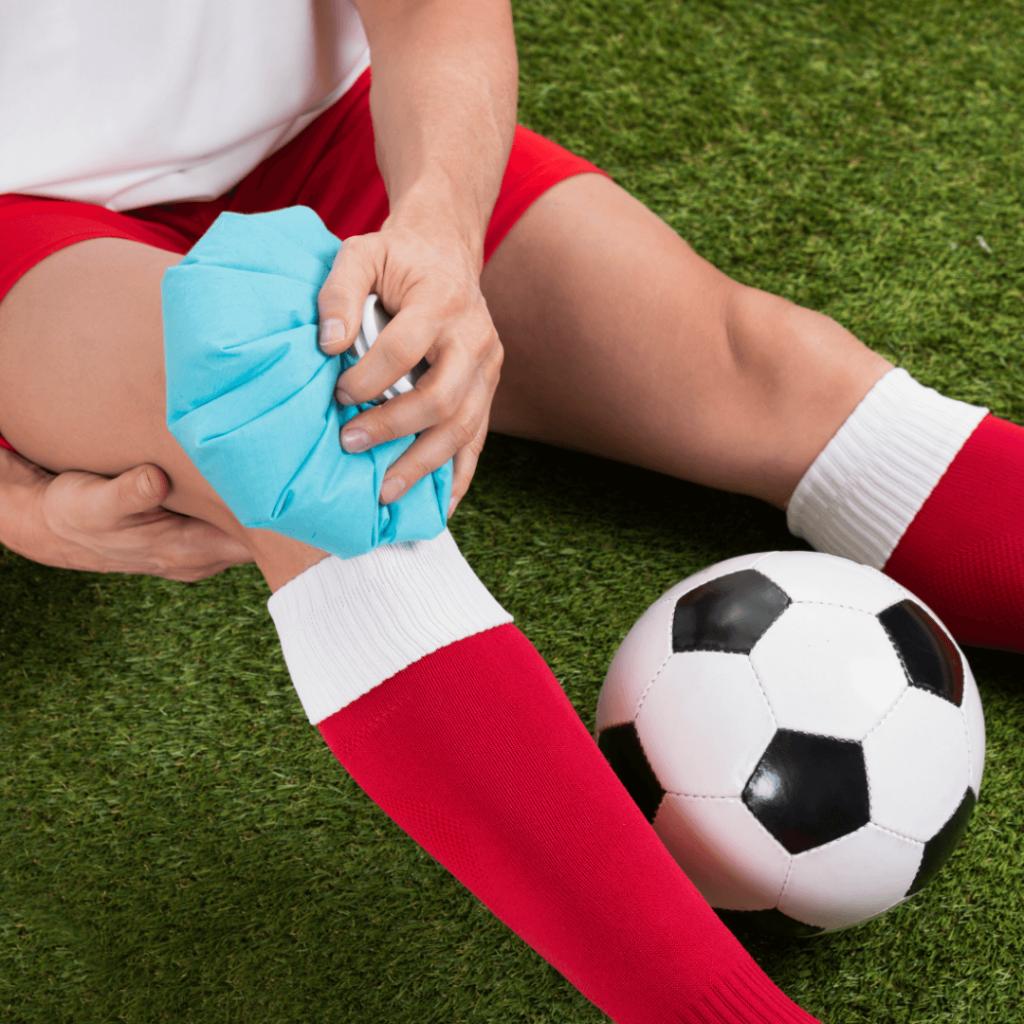Modalities for Pain: I Get By With A Little Help From My Friends!


Michelle DeMarchi
BSc PT, DOMP
Physiotherapist, Pelvic Health Physiotherapist, Bracing Specialist
When and how to use modalities to manage pain and injury
One of the most common questions I get from my patients is how to self-manage minor injuries at home.
So you rolled your ankle, your back went into spasm, you have had that nagging pain in your shoulder for a couple months and you cannot get in to see a Physio for a few days. What can you do in the meantime?
Growing up, everyone followed the RICE principle (rest, ice, compression, elevation), however every injury is unique and this cookie cutter principle does not work for every injury.
Below are general rules to follow when trying to manage your injuries at home.
REST
Offloading tissues and giving them time to heal is an important part of the healing process and preventing injuries from becoming chronic.
However, there are also times when rest is not the answer. I prefer to think of rest as optimal loading.
Depending on the tissue, putting appropriate amounts or types of forces through the tissue won’t hurt it, and may actually help with healing.
Most commonly, people will have a muscle spasm and spend a few days just lying on their back in bed. This can actually delay healing. Regular movement as simple as getting up and moving around can help mitigate stiffness and help you get back to activity faster.
ICE
One of the most used methods of pain management, ice is the first thing we reach for when an injury occurs.
Ice is effective at numbing the area by decreasing the speed at which pain signals can get from the tissue to the brain. This makes it great for pain management! Additionally, ice is great at decreasing inflammation and stopping swelling from forming.
Therefore, for any inflammatory condition or in the first few days following a traumatic injury (ie. rolled ankle), ice is a great modality to reach for!
HOW TO USE: The easiest way to ice is to get a sealable bag and fill it with cold water and ice cubes. This can be put right on the skin as the water acts as a barrier to the ice burning your skin. Put the ice on for 10 minutes, then off for 10 minutes, and repeat as needed.
HEAT
Heat has slowly become more common over the past decade.
Heat can overload the nerve receptors in the area of pain, decreasing the amount of pain signals that can get through to the brain, lowering the amount of pain you feel.
Additionally, heat brings blood flow, which brings oxygen and nutrients that the tissue needs in order to heal, and can help to flush out any swelling already present.
Finally, heat helps relax tension in muscles and increase their extensibility.
Therefore, heat should be used for persistent swelling, muscle spasms, persistent injuries, or after the first few days of a traumatic injury.
HOW TO USE: Heat forms include bean bags, heating pads, hot water bottles or warm showers and the temperature should be tolerable on the skin. Apply it 20 minutes on, 20 minutes off as needed.
ELEVATION
Elevation works by taking your limbs and putting them above your heart.
This makes your circulatory system have to work harder to pump blood out there, resulting in decreased blood flow to the area.
Additionally, any fluid present in the area will flow with gravity back to the heart.
Therefore, elevation is helpful in both the prevention and resolution of swelling, as well as pain relief due to the elimination of blood pressure in the area.
HOW TO USE: In order to effectively elevate, the injury must be placed approximately 30cm (one ruler length) above your heart. Elevated for 15 minutes as needed.
COMPRESSION
Just like when you hold a tissue on a cut to stop the bleeding, compression after injury can help to slow the bleeding of tissues under the skin.
Compression limits the amount of blood flow to the area and is effective at preventing swelling.
Additionally, compression can help push fluid sitting in the tissues into the lymphatic system, to help drain swelling out of an area.
Therefore, compression is great following traumatic injuries or if there is persistent swelling.
HOW TO USE: Wrap the area with an elastic bandage, being sure not to wrap too tight! If you experience pain, swelling below the bandage, numbness or coldness, the bandage is too tight!
As always, if your injuries are more severe, please do not hesitate to seek medical attention.
Contact PhysioPlus Health Group to book your appointment with a registered Physiotherapist, Massage Therapist, Chiropractor, Chiropodist, or Osteopath.
In the meantime, use some of these tips to help manage pain or acute injuries at home!
